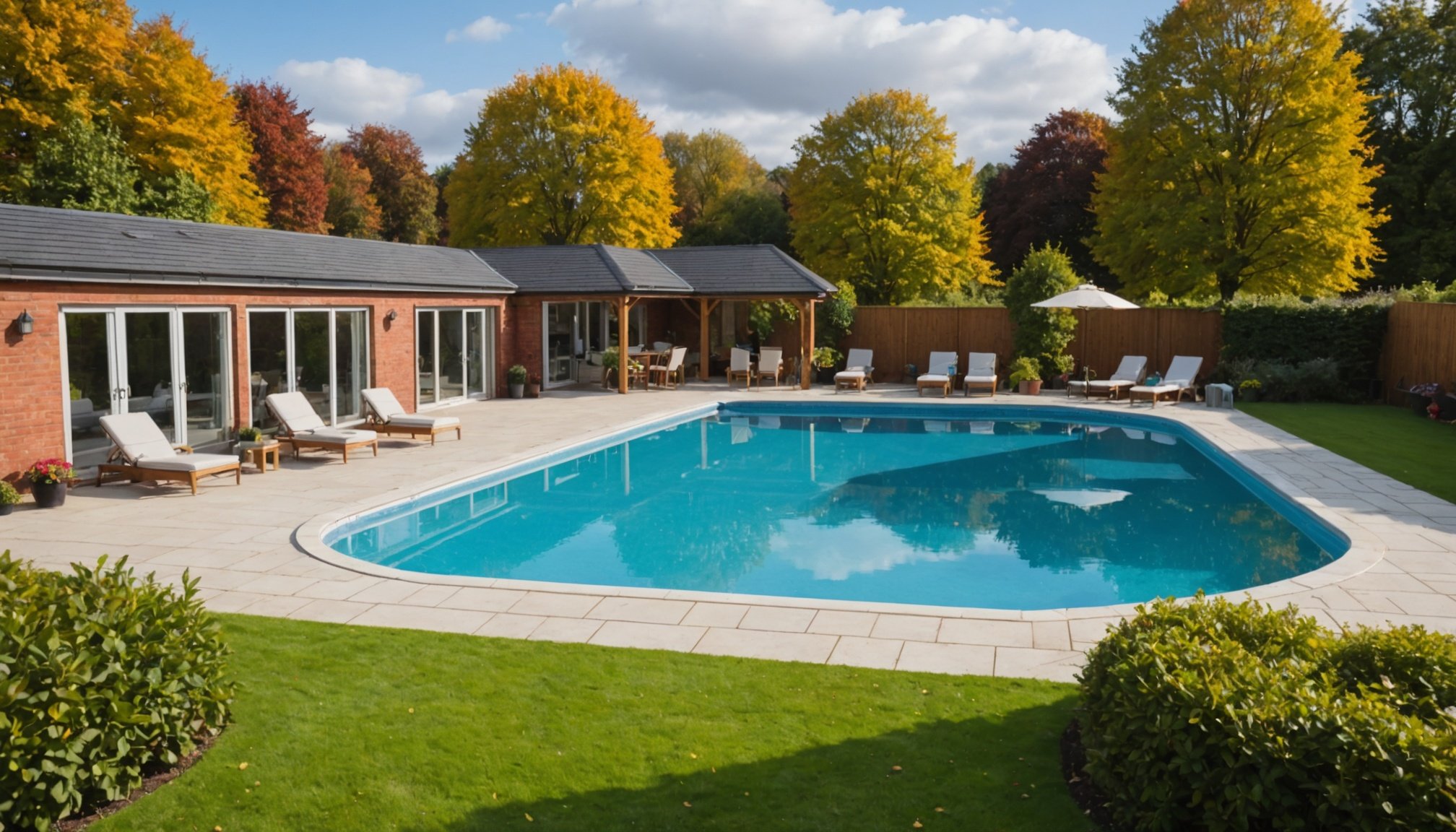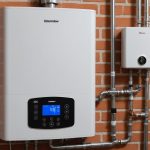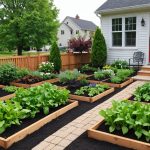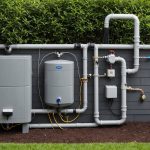Optimal Autumn Temperature Settings for Your Heated Home Swimming Pool in the UK: A Comprehensive Guide
As the autumn months approach, maintaining the perfect temperature for your home swimming pool becomes crucial, especially if you’re lucky enough to have an indoor or underground pool. Here’s a detailed guide to help you optimize your pool’s temperature settings, ensuring you can enjoy your swimming pool all year round.
Understanding Pool Heating Options
When it comes to heating your swimming pool, you have several options, each with its own set of advantages and challenges.
A lire aussi : Transform Your UK Home with a Stunning Mediterranean-Inspired Pool Area
Air Source Heat Pumps
Air source heat pumps are one of the most popular choices for pool heating in the UK. These pumps extract heat from the air and transfer it to the pool water, making them highly energy-efficient. According to the pool heat pump market analysis, air source heat pumps produce approximately 5.25 units of heat for every unit of electricity used, making them a cost-effective option[5].
Key Benefits of Air Source Heat Pumps:
Avez-vous vu cela : Top Techniques for Effectively Balancing pH Levels in Your UK Home Swimming Pool
- Energy Efficiency: They save at least 3,000 kWh per year compared to conventional heating methods.
- Lower Installation Costs: Compared to ground source heat pumps, air source heat pumps are less complex and cheaper to install.
- Suitability: Ideal for homes where the surrounding land is not suitable for ground source systems.
Ground Source Heat Pumps
Ground source heat pumps, while more expensive to install, offer a highly sustainable method for heating and cooling pools. These pumps extract heat from the ground and transfer it to the pool water. Despite the higher initial costs, they provide significant long-term energy savings, especially in larger commercial settings like hotels and resorts[5].
Key Benefits of Ground Source Heat Pumps:
- Sustainability: They are considered the most sustainable method for heating and cooling pools.
- Long-Term Savings: Significant energy savings can be achieved, particularly in large-scale installations.
- Reliability: Ground source heat pumps are less affected by external weather conditions.
Setting the Optimal Temperature for Your Pool
The ideal temperature for your swimming pool depends on several factors, including the purpose of the pool, the age and health of the users, and personal preference.
For General Swimming
For general swimming, a temperature range of 25°C to 28°C (77°F to 82°F) is considered optimal. This range provides a comfortable swimming experience without being too hot or too cold.
For Competitive Swimming
If you’re using your pool for competitive swimming or intense workouts, a slightly cooler temperature of 24°C to 26°C (75°F to 79°F) is often preferred. This temperature helps in improving performance and reducing fatigue.
For Leisure and Relaxation
For leisure and relaxation, such as in a hot tub or spa setting, temperatures can range from 30°C to 34°C (86°F to 93°F). This warmer temperature is ideal for unwinding and enjoying the therapeutic benefits of warm water.
Maintaining the Right Temperature
Maintaining the optimal temperature is crucial for both the comfort of the users and the longevity of the pool equipment.
Regular Maintenance
Regular maintenance is key to ensuring your heat pump operates efficiently. Here are some tips:
Maintenance Checklist:
- Clean the Filter: Regularly clean the filter of your heat pump to ensure it operates efficiently.
- Clear Debris: Clear any debris from the outdoor unit to prevent obstructions.
- Check for Leaks: Regularly inspect the system for any leaks or damage.
- Technical Support: Ensure you have access to technical support for any issues that may arise.
Energy Efficiency Tips
To maximize energy efficiency, consider the following:
Energy Efficiency Tips:
- Use a Pool Cover: A pool cover can help retain heat when the pool is not in use.
- Optimize Pump Operation: Run your pool pump during off-peak hours when electricity rates are lower.
- Solar Heating: Consider integrating solar heating panels to supplement your heat pump, especially during sunny days.
Cost Considerations and Budgeting
The cost of heating your pool can be significant, so it’s important to budget accordingly.
Initial Costs
The initial cost of installing a heat pump can vary widely depending on the type and size of the pump.
| Type of Heat Pump | Estimated Installation Cost |
|---|---|
| Air Source Heat Pump | £350 – £1,700[3] |
| Ground Source Heat Pump | £3,000 – £10,000[5] |
Ongoing Costs
Ongoing costs include the power and products needed for water filtration, sterilization treatment, and heating.
Ongoing Cost Breakdown:
- Energy Consumption: The energy consumption of your heat pump will depend on the size of your pool and the desired temperature.
- Maintenance Contracts: Regular maintenance contracts can help prevent costly repairs and ensure long-term efficiency.
- Spare Parts: Keeping spare parts on hand can help reduce downtime and save money in the long run.
Case Study: Underground Pools in Luxury Homes
Underground pools, particularly in luxury homes, are becoming increasingly popular due to their ability to provide a year-round swimming experience.
Example from London:
In London’s luxury market, underground pools are part of a high-end basement boom. According to Alex Christian, joint head of the private office at Savills, “Interior designers are increasingly seeing swimming pools as a key part of an overall project, and stylistically they are being as creative with the pool and its surrounding area as they are with the rest of the property.”[1]
Practical Insights and Actionable Advice
Here are some practical insights and actionable advice to help you optimize your pool heating:
Choosing the Right Materials
When designing your pool area, it’s crucial to choose the right materials to ensure both beauty and practicality.
Material Recommendations:
- Durable Textured Stone: Instead of polished marble, use durable textured stone for the edge surface to prevent slipping and damage[1].
Intelligent Design
Maximizing space and light in a basement pool area is essential.
Design Tips:
- Natural Light: Opt for natural light where possible, but consider alternative lighting solutions if natural light is limited.
- Temperature and Humidity: Ensure the pool area is neither too hot nor too humid, as advised by Alex Christian[1].
Maintaining the optimal temperature for your home swimming pool is a balance of comfort, energy efficiency, and cost management. By understanding the different heating options available, setting the right temperature, and following practical maintenance and energy efficiency tips, you can enjoy your pool all year round.
Final Thoughts:
- “Our real three pillars are design, build, and aftercare. There’s quite a lot of maintenance with swimming pools, particularly at a high specification,” says Dominic Searle of Aqua Platinum Projects. This emphasis on long-term enjoyment and use underscores the importance of careful planning and maintenance[1].
- Whether you’re using air source or ground source heat pumps, the key is to find a solution that fits your needs and budget, ensuring you can enjoy your swimming pool in the best possible conditions.
By following this comprehensive guide, you’ll be well on your way to creating an optimal and enjoyable swimming environment, even as the autumn months set in.











